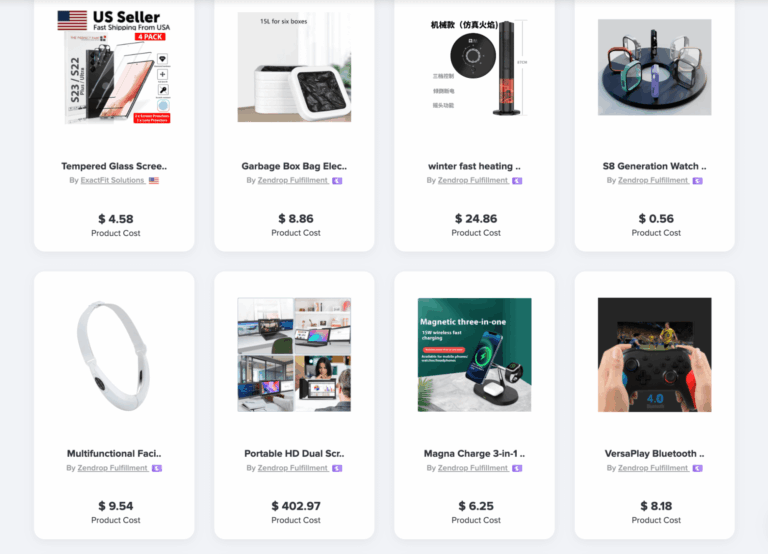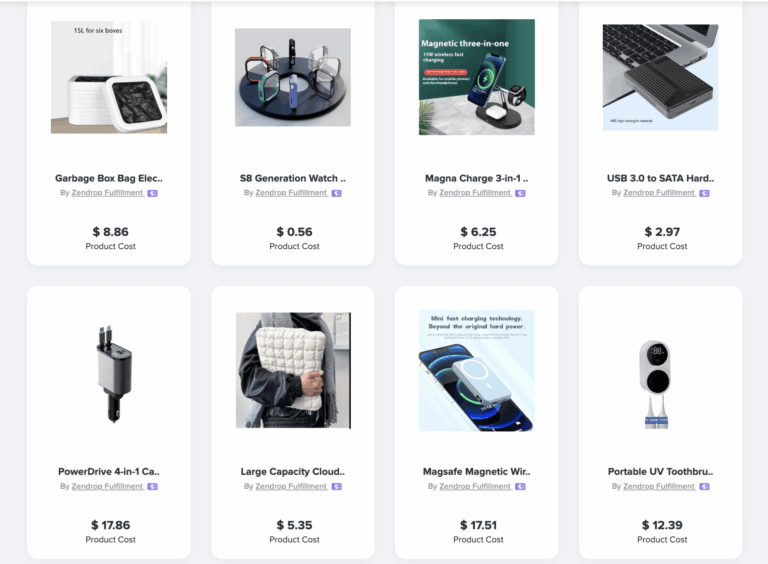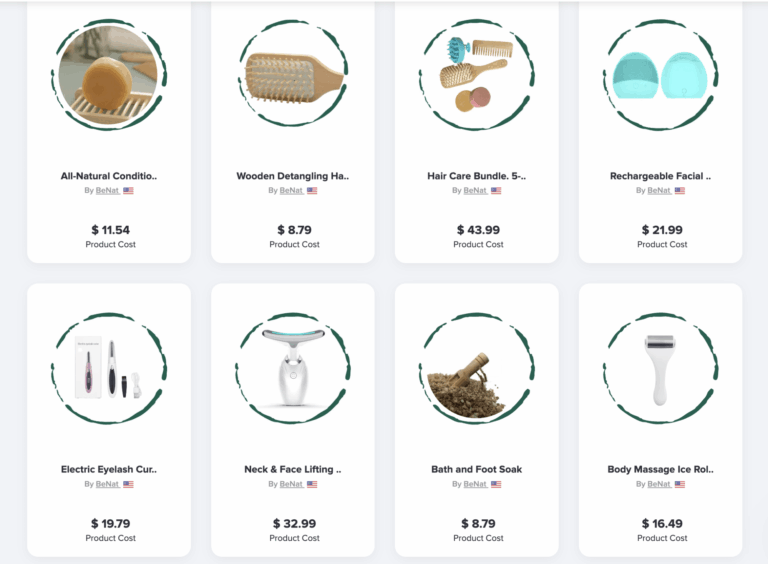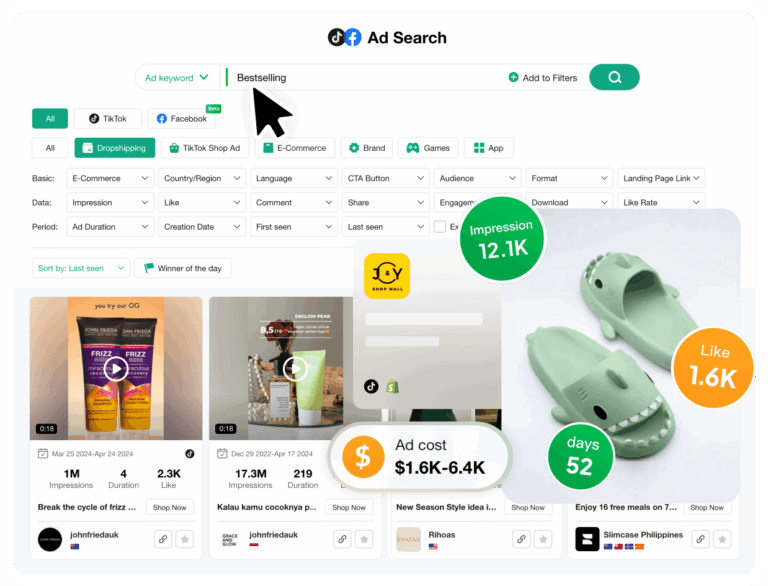What Is Dropshipping and How Does It Work? (2025)
Your Complete Guide to dropshipping product finder
Welcome to Your Entrepreneurial Journey
Congratulations on taking the first step towards starting your own online business! Your ambition to become an entrepreneur is commendable, and with the right tools and strategies, your dreams can transform into a thriving reality. One of the most accessible and popular ways to enter the world of e-commerce is through dropshipping—a business model that allows you to sell products without the need for inventory or upfront costs.
Dropshipping is a retail fulfillment method where you, as the store owner, sell products directly from suppliers. When a customer makes a purchase, the supplier ships the product directly to the customer on your behalf. This means you don’t have to worry about inventory management or shipping logistics, making it an attractive option for aspiring entrepreneurs like you. With minimal startup costs and the flexibility to run your business from anywhere, dropshipping provides a perfect platform for those looking to dive into e-commerce without a significant financial investment.
In this comprehensive guide, we will walk you through the essential steps of finding the right products to sell in your dropshipping store. You will learn how to identify trending products, analyze market demand, and leverage data-driven insights to make informed decisions. We’ll cover the following key areas:
- Product Research: Discover effective tools and methods for identifying winning products that resonate with your target audience.
- Market Analysis: Understand how to assess competition and market saturation to find the sweet spot for your offerings.
- Supplier Sourcing: Learn how to connect with reliable suppliers and streamline your order fulfillment process.
- Marketing Strategies: Explore techniques to effectively promote your products and drive traffic to your store.
- Sales Optimization: Gain insights into converting visitors into customers and making your first sale.
This guide will serve as your roadmap, equipping you with the knowledge and confidence you need to embark on your dropshipping journey. Remember, every successful entrepreneur started where you are now—with a dream and the determination to see it through.
As you delve into the world of dropshipping, keep in mind that persistence and adaptability are key. With the right mindset and the strategies outlined in this guide, you can turn your entrepreneurial aspirations into a thriving online business. Let’s get started on this exciting adventure together!
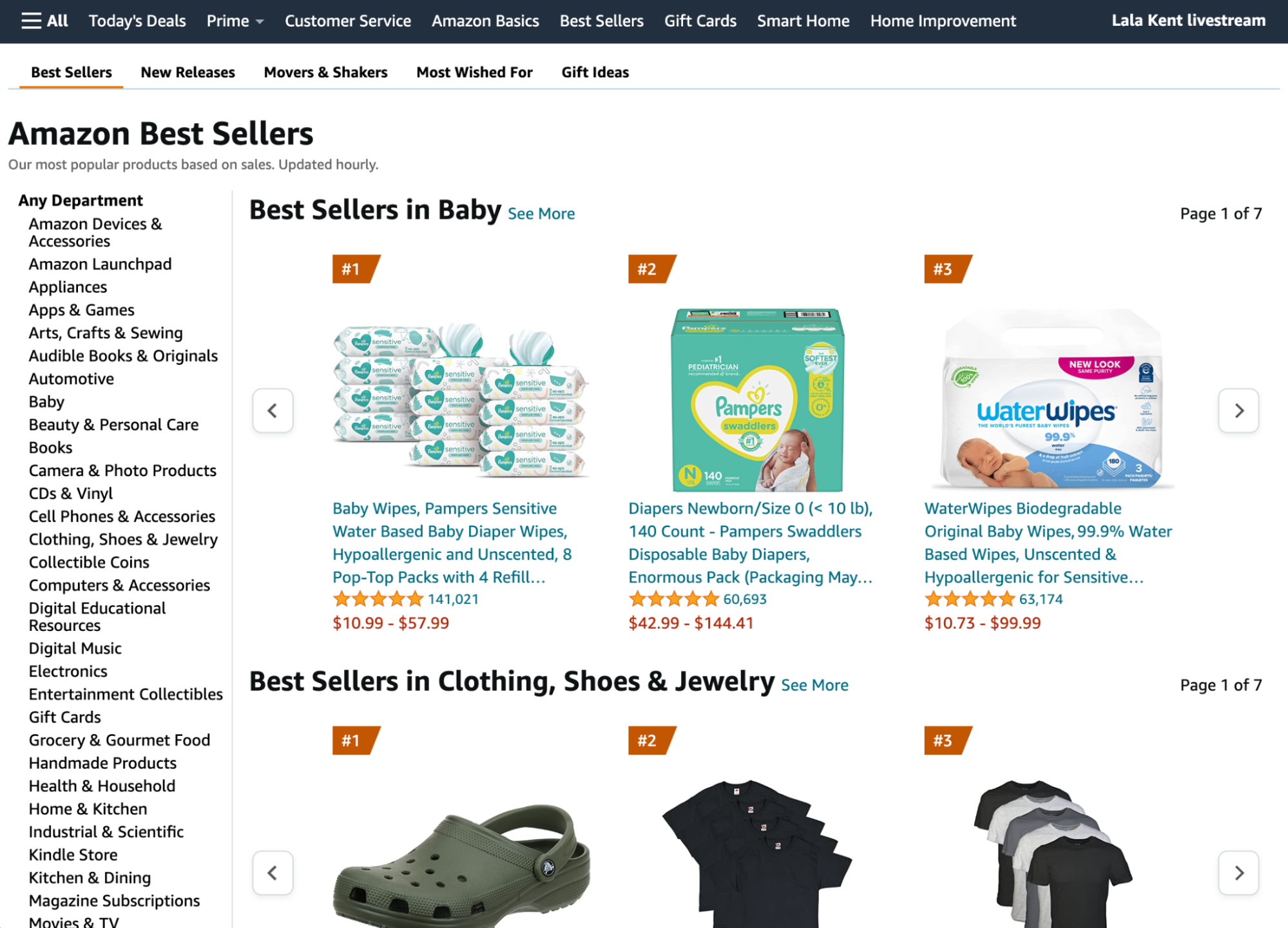
What You’ll Learn In This Guide
- Your Complete Guide to dropshipping product finder
- How Does Dropshipping Actually Work? A Step-by-Step Breakdown
- The Pros and Cons of Dropshipping: Is It Right for You?
- Step 1: Finding a Profitable Niche and Winning Products
- Step 2: Choosing the Right Dropshipping Suppliers
- Step 3: Building Your Online Store
- Step 4: Marketing Your Dropshipping Business to Get Sales
- Common Mistakes to Avoid as a Beginner
- Frequently Asked Questions (FAQs) about dropshipping product finder
- Conclusion: Your Next Steps to Launching Your Business
- Important Disclaimer
How Does Dropshipping Actually Work? A Step-by-Step Breakdown
Understanding the Dropshipping Model: A Step-by-Step Breakdown
If you’re new to the world of e-commerce, the dropshipping model can seem a bit complex at first. However, it’s an incredibly straightforward and efficient way to start your online business with minimal investment. Here’s a clear breakdown of how dropshipping works, step by step:
- Customer Places an Order on Your Online Store
-
When a customer visits your e-commerce website and finds a product they want to buy, they place an order by adding it to their cart and completing the checkout process. This is the first point of interaction where your digital storefront shines, showcasing your chosen products and brand.
-
You Receive the Payment
-
After the customer completes their purchase, the payment is processed through your payment gateway. At this moment, the funds are transferred to your account, minus any transaction fees from the payment processor. This is where you start to see the flow of money into your business.
-
You Forward the Order to Your Supplier
-
Once you have the payment, you immediately send the order details to your dropshipping supplier. This typically includes the customer’s shipping address and the product they purchased. Think of yourself as a digital middleman – you’re not holding inventory, but you’re facilitating the transaction between the customer and the supplier.
-
The Supplier Ships the Product Directly to the Customer
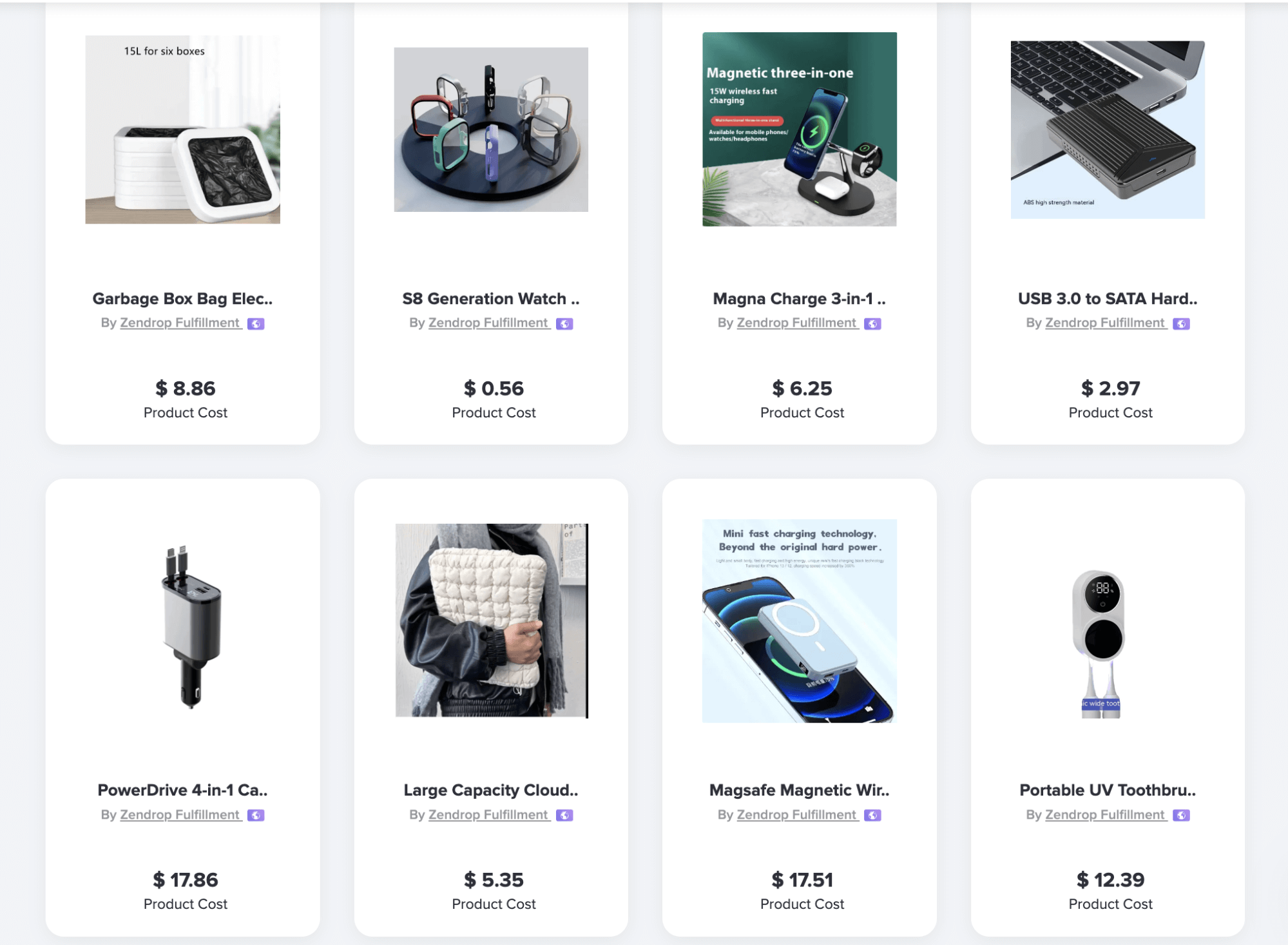
- After receiving the order, the supplier picks, packs, and ships the product directly to your customer. This means the customer receives the product without ever knowing it came from a third party, maintaining your brand image. The supplier takes care of logistics, allowing you to focus on marketing and customer service.
The Flow of Money and Goods
In the dropshipping model, the flow of money and goods is seamless. Here’s how it works:
- Money Flow:
- Customer → Your Online Store → Supplier
-
When the customer pays for the product, the money goes to your store. After you send the order to your supplier, you pay them the wholesale price of the product. The difference between what the customer paid and what you pay the supplier is your profit.
-
Goods Flow:
- Supplier → Directly to Customer
- The product never touches your hands. Instead, the supplier handles everything from storage to shipping, allowing you to operate without the burden of inventory management.
An Analogy for Clarity
Imagine you’re a restaurant owner. Instead of cooking the food yourself, you have a contract with a catering service. When a customer orders a meal, you take their order and send it to the catering service. They prepare the meal and deliver it straight to the customer’s table. In this scenario, you’re the restaurant – the digital storefront – and the catering service is your dropshipping supplier.
Why This Model Works for Beginners
- Low Overhead Costs: You don’t have to invest in inventory or warehouse space, which significantly lowers your startup costs.
- Flexibility: You can easily test different products and niches without the risk of unsold inventory.
- Focus on Growth: Since the supplier handles shipping and logistics, you can dedicate more time to marketing and scaling your business.
Final Thoughts
Dropshipping is an accessible way for aspiring entrepreneurs to break into the e-commerce space. By understanding the step-by-step process of how it works, you can confidently take the first steps toward building your online business. Remember, the key to success in dropshipping lies in choosing reliable suppliers, selecting trending products, and effectively marketing your store. With dedication and the right strategies, you can turn your dropshipping venture into a profitable online business.
The Pros and Cons of Dropshipping: Is It Right for You?
Advantages and Challenges of Dropshipping
| Advantages of Dropshipping (Pros) | Challenges of Dropshipping (Cons) |
|---|---|
| Low Financial Risk | Low Profit Margins |
| Minimal upfront investment as you don’t hold inventory. | Margins are often thin, typically ranging from 10% to 30%. |
| Wide Product Selection | High Competition |
| Access to a vast array of products from various suppliers. | Many sellers may offer the same products, leading to price wars. |
| Location Independence | Supplier Reliability Issues |
| Operate your business from anywhere with internet access. | Dependence on suppliers for inventory and shipping can lead to delays. |
| Scalability | Limited Control Over Branding and Quality |
| Easily scale your business without the need for additional inventory. | You have less control over product quality and branding. |
| Automated Operations | Customer Service Challenges |
| Many tasks can be automated, including order processing. | Handling returns and customer complaints can be complicated. |
| Access to Market Insights | Learning Curve |
| Tools are available to analyze trends and competitor performance. | Requires knowledge of digital marketing and e-commerce strategies. |
| Low Overhead Costs | Seasonality and Trends |
| No need for physical storage space or high operational costs. | Product demand can fluctuate based on trends and seasons. |
Expanding on the Advantages
One of the most significant advantages of dropshipping is its low financial risk. For aspiring entrepreneurs, the prospect of starting a business can often be daunting due to the high costs associated with inventory and overhead. With dropshipping, you can launch an online store without the need to invest heavily in stock upfront. This means you can focus your financial resources on marketing and developing your brand rather than worrying about unsold inventory.
Additionally, the wide product selection available through dropshipping allows you to explore various niches and test different products without the fear of being stuck with excess stock. You can quickly pivot your strategy based on market trends and consumer preferences, which is particularly advantageous in the fast-paced e-commerce landscape. Tools like product research platforms can help you identify trending products, enhancing your chances of success.
Another critical advantage is location independence. As long as you have internet access, you can manage your business from anywhere in the world. This flexibility is appealing to many entrepreneurs who wish to work remotely or travel while running their business. With automated operations for order processing and inventory management, you can streamline your workflow and focus on marketing and customer engagement.
Addressing the Challenges
Despite its many benefits, dropshipping does come with its own set of challenges. One of the most prominent is the issue of low profit margins. Because the barriers to entry are low, many entrepreneurs enter the dropshipping space, resulting in increased competition and reduced prices. You might find yourself struggling to maintain healthy profit margins, especially if you’re selling products that others can easily source. It’s crucial to conduct thorough market research and find unique products or niches to differentiate yourself.
High competition can also be daunting. With numerous sellers offering similar products, it’s vital to develop a strong brand identity and effective marketing strategies to stand out. Utilizing tools for competitor analysis can provide insights into what successful dropshippers are doing, helping you craft your own winning strategies.
Additionally, dropshipping relies heavily on supplier reliability. Issues such as inventory shortages, shipping delays, or quality control problems can negatively impact your customer experience. Establishing strong relationships with reliable suppliers and having contingency plans in place can help mitigate these risks.
Lastly, the learning curve associated with dropshipping should not be underestimated. While it’s relatively easy to set up an online store, achieving success requires a solid understanding of digital marketing, customer service, and e-commerce best practices. Investing time in learning these skills will pay off in the long run, equipping you with the tools necessary to navigate the competitive landscape.

In summary, dropshipping presents an exciting opportunity for aspiring entrepreneurs with its low financial risk and flexible business model. However, it’s essential to be aware of the challenges, such as low profit margins and high competition. By staying informed, leveraging the right tools, and continually optimizing your strategies, you can carve out a successful niche in the ever-evolving world of e-commerce.
Step 1: Finding a Profitable Niche and Winning Products
What Makes a Good Niche?
Finding a profitable niche is the cornerstone of a successful dropshipping business. A good niche should meet several criteria:
-
Passion and Interest: Choose a niche that resonates with your interests or passions. This personal connection will help you stay motivated and engaged.
-
Market Demand: Research the market demand using tools like Google Trends or keyword research tools. A good niche has consistent interest over time rather than being a fleeting trend.
-
Target Audience: Clearly define your target audience. Understand their demographics, preferences, and buying behaviors. This information will help tailor your marketing strategies effectively.
-
Competition Analysis: While some competition is healthy, an overcrowded niche can make it difficult to stand out. Look for niches that have a manageable level of competition.
-
Profitability: Assess the potential profit margins. A good niche should allow for a reasonable markup after accounting for product costs, shipping, and marketing expenses.
-
Product Availability: Ensure that there are sufficient products available for dropshipping in your chosen niche. A limited product range can restrict your business growth.
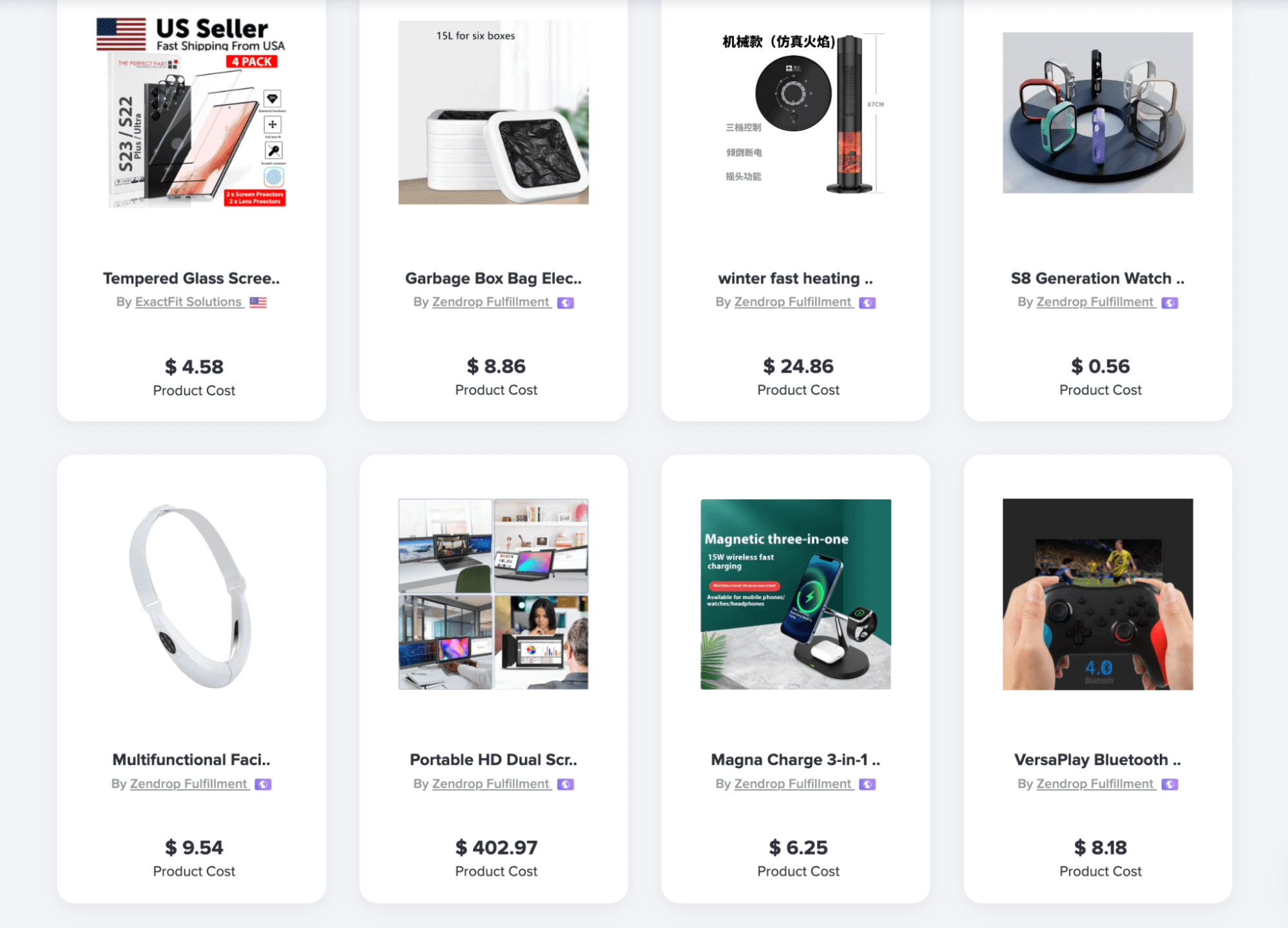
How to Brainstorm Niche Ideas
Brainstorming niche ideas can be an exciting yet challenging process. Here are some effective strategies:
-
Mind Mapping: Start with a broad category that interests you and create a mind map to explore subcategories. This visual representation can help you identify specific niches.
-
Problem-Solving: Think about common problems people face in their daily lives. A niche that offers solutions to these problems can attract a dedicated audience.
-
Leverage Trends: Use platforms like Pinterest, Instagram, and TikTok to spot emerging trends. Look for products or categories that are gaining traction and consider how you can tap into these trends.
-
Marketplaces Exploration: Browse popular e-commerce platforms like Amazon, eBay, or Etsy. Check the best-selling items and customer reviews to identify gaps in the market.
-
Social Media Groups and Forums: Join relevant Facebook groups, Reddit communities, or online forums. Engage in discussions to understand what products or services people are seeking.
-
Competitor Analysis: Analyze successful competitors in the dropshipping space. What niches are they operating in? Use tools like SimilarWeb to gain insights into their traffic and audience.
Validating Your Niche
Once you have a list of potential niches, it’s crucial to validate them before diving in. Here’s how:
-
Keyword Research: Use tools like Ahrefs or Ubersuggest to analyze search volume and competition for keywords related to your niche. High search volume with low competition indicates a promising niche.
-
Test with Ads: Create targeted ads on platforms like Facebook or Google to gauge interest in your niche. Monitor the engagement and conversion rates to assess demand.
-
Surveys and Feedback: Conduct surveys or polls within your target audience. Use platforms like SurveyMonkey to gather feedback on your niche ideas and potential products.
-
Check for Existing Brands: Identify existing brands in your niche and analyze their performance. Look for customer reviews and feedback to understand market sentiment.
-
Evaluate Profit Margins: Calculate potential profit margins based on supplier prices and selling prices. Ensure that you can achieve a sustainable profit.
-
Analyze Trends: Use Google Trends to analyze the search interest over time. A steady increase or consistent interest can indicate a viable niche.
Methods for Finding Winning Products
Finding winning products is essential for your dropshipping success. Here are actionable methods to help you discover them:
-
Supplier Marketplaces: Start by exploring popular supplier marketplaces like AliExpress, Oberlo, or Spocket. Look for products with high order volumes and positive reviews. Focus on items that are trending or have gained popularity.
-
Social Media Trend Tools: Use social media tools to identify trending products. For example, TikTok Shop tools can provide insights into popular items and their sales performance. Pay attention to viral products and consider how you can incorporate them into your store.
-
Ad Libraries: Utilize ad libraries like the Facebook Ads Library to see which products competitors are advertising. Look for high engagement rates and successful campaigns to identify potential winning products.
-
Product Research Tools: Leverage product research tools like Dropship or Tradelle. These platforms provide access to vast databases, allowing you to filter products by sales, ad spend, and engagement metrics.
-
Criteria for a Good Dropshipping Product:
- Price Point: Aim for products priced between $20 and $200. This range generally allows for a good markup while remaining affordable for customers.
- Unique Selling Proposition: Choose products that are not easily found in local stores. Unique or specialized items can attract more customers.
- Problem Solving: Look for products that solve a specific problem. Consumers are more likely to purchase items that address their pain points.
- Quality and Reliability: Ensure the products you choose are of high quality and come from reliable suppliers. Poor product quality can lead to high return rates and negative reviews.
-
Shipping Times: Consider shipping times and choose products that can be delivered quickly. Long shipping times can deter potential customers.
-
Seasonal Trends: Keep an eye on seasonal trends and plan product launches accordingly. Use tools that track seasonal trends to identify peak buying periods for specific products.
Conclusion
Finding a profitable niche and winning products is a crucial step in your dropshipping journey. By focusing on your interests, validating your ideas, and leveraging the right tools and strategies, you can build a successful business with minimal investment. Remember, persistence and continuous learning are key. Stay adaptable, keep an eye on market trends, and always be ready to pivot as needed. Your journey as an entrepreneur begins here—embrace the adventure!
Step 2: Choosing the Right Dropshipping Suppliers
Understanding the Importance of Choosing the Right Supplier
Selecting the right dropshipping supplier is one of the most critical steps in launching and scaling your online business. A reliable supplier can make or break your success in the dropshipping model. They influence product quality, shipping times, and overall customer satisfaction, which directly impact your store’s reputation and profitability.
In this section, we will explore some of the most popular platforms for finding dropshipping suppliers, including AliExpress, CJ Dropshipping, and USA-based suppliers. Each platform has its unique advantages and drawbacks, so understanding these will help you make informed decisions that align with your business goals.
AliExpress
Overview
AliExpress is one of the largest online retail services based in China, offering a wide range of products from various suppliers. It is particularly popular among dropshippers due to its vast selection and low prices.
Pros:
– Wide Variety of Products: With millions of products available, you can find almost anything to sell in your store.
– Low Prices: Many suppliers offer competitive pricing, allowing for higher profit margins.
– No Minimum Order Requirement: You can purchase products individually, which is ideal for dropshipping.
– Buyer Protection: AliExpress provides a buyer protection program, ensuring you get refunds for undelivered items.
Cons:
– Long Shipping Times: Most suppliers are based in China, which can lead to longer delivery times, potentially frustrating customers.
– Inconsistent Quality: The quality of products can vary significantly between suppliers, making it essential to vet them carefully.
– Language Barriers: Communication with suppliers may be challenging due to language differences.
CJ Dropshipping
Overview
CJ Dropshipping is a comprehensive dropshipping platform that connects you with suppliers primarily based in China, but also offers warehouses in other countries, including the USA and Europe.
Pros:
– Faster Shipping Options: CJ Dropshipping provides various shipping methods, including ePacket and express shipping, which can significantly reduce delivery times.
– Quality Control: CJ has a quality control team that inspects products before they are shipped, ensuring better product quality.
– Product Sourcing Service: CJ can source products for you, even if they are not listed on their platform, making it easier to find unique items.
– Integration with Shopify and WooCommerce: Easy integration allows for seamless order processing.
Cons:
– Higher Costs: While you might find competitive prices, costs can be higher than AliExpress for some products.
– Limited Product Range: Although their catalog is extensive, it may not match the sheer volume available on AliExpress.
– Learning Curve: The platform can be complex for beginners, requiring time to familiarize yourself with its features.
USA-Based Suppliers
Overview
Working with USA-based suppliers can provide a significant advantage in terms of shipping times and customer satisfaction. These suppliers are typically more reliable in terms of communication and product quality.
Pros:
– Faster Shipping Times: Products can often be delivered within a few days, enhancing customer satisfaction.
– Better Communication: English-speaking suppliers make communication smoother and more effective.
– Quality Assurance: Many USA-based suppliers have established reputations, often leading to higher quality products.
– Returns and Customer Service: Handling returns is generally easier when suppliers are local, improving your customer service experience.
Cons:
– Higher Product Costs: Prices are usually higher compared to suppliers based in China, which can reduce profit margins.
– Limited Product Variety: The range of products may not be as extensive as global platforms like AliExpress.
– Minimum Order Requirements: Some USA-based suppliers may require minimum order quantities, which is not ideal for dropshipping.
What to Look for in a Good Supplier
When evaluating potential dropshipping suppliers, consider the following checklist to ensure you choose the right partner for your business:
- Communication:
- Ensure the supplier is responsive and communicates clearly.
-
Test their response time by asking questions before making a commitment.
-
Shipping Times:
- Evaluate shipping options and times. Aim for suppliers that offer fast and reliable shipping methods.
-
Check if they provide tracking information for shipped orders.
-
Product Quality:
- Order samples to assess the quality of products before listing them in your store.
-
Read reviews from other dropshippers and customers to gauge product performance.
-
Return Policies:
- Understand the supplier’s return and refund policies. Favor suppliers with clear and fair policies.
-
Ensure that they handle returns efficiently to maintain customer satisfaction.
-
Pricing and Margins:
- Compare product prices across different suppliers to find the best deals.
-
Calculate potential profit margins to ensure your business remains profitable.
-
Experience and Reputation:
- Research the supplier’s history and reputation in the dropshipping community.
-
Look for testimonials and case studies from other entrepreneurs who have worked with them.
-
Integration Capabilities:
- Check if the supplier integrates easily with your e-commerce platform (e.g., Shopify, WooCommerce).
-
Automated order processing features can save time and reduce errors.
-
Product Range:
- Ensure the supplier has a diverse range of products that fit your niche.
-
Having access to various products allows for easier market adaptation and trend responsiveness.
-
Scalability:
- Consider whether the supplier can accommodate your business growth.
- Ensure they can handle increased order volumes as your store expands.
Conclusion
Choosing the right dropshipping supplier is essential for your business’s success. By carefully evaluating platforms like AliExpress, CJ Dropshipping, and USA-based suppliers, you can find partners that align with your goals. Use the checklist provided to guide your supplier selection process, ensuring you prioritize communication, quality, and reliability. Remember, the right supplier can help you build a strong foundation for your dropshipping business, allowing you to focus on marketing and scaling your operations. Stay proactive, and you’ll be well on your way to creating a thriving online store!
Step 3: Building Your Online Store
Setting Up Your Online Store for Dropshipping Success
Building an online store is an exciting and crucial step in your dropshipping journey. Shopify is the most popular e-commerce platform, particularly for dropshipping, due to its user-friendly interface and robust features. This guide will walk you through the essential steps to set up your online store effectively.
1. Choosing a Shopify Plan
Before diving into the design and setup of your store, you need to select a Shopify plan that suits your needs. Shopify offers several pricing tiers, including Basic, Shopify, and Advanced plans.
- Basic Plan: Ideal for beginners, this plan provides all the necessary features to start and run your dropshipping business.
- Shopify Plan: Offers additional reporting features and lower transaction fees, suitable for growing businesses.
- Advanced Plan: Best for established businesses needing advanced reporting and additional staff accounts.
Tip: Start with the Basic plan to minimize costs, then upgrade as your business grows. Shopify often offers a 14-day free trial, allowing you to explore the platform without any commitment.
2. Picking a Theme
Once you’ve chosen your plan, it’s time to select a theme. Your store’s theme determines its look and feel, so choose one that resonates with your brand and appeals to your target audience.
- Free Themes: Shopify offers several free themes that are fully customizable. These are great for beginners.
- Paid Themes: If you want a unique look or specific functionalities, consider investing in a paid theme from the Shopify Theme Store or third-party providers.
Tip: Look for a responsive theme that works well on both desktop and mobile devices, as a significant amount of shopping is done on mobile.
3. Setting Up Essential Pages
To build trust and provide a seamless shopping experience, create essential pages for your store:
- About Us: Share your story, mission, and values. This helps customers connect with your brand.
- Contact Page: Provide a way for customers to reach you. Include an email address, phone number, and a contact form.
- Policies: Clearly outline your return policy, shipping policy, privacy policy, and terms of service. Transparency is key to gaining customer trust.
Tip: Use templates available within Shopify to create these pages quickly and efficiently.
4. Installing Key Apps
Enhance your store’s functionality by installing essential apps. Here are some must-haves for dropshipping:
- Import Tools: Tools like DSers or CJ Dropshipping help you import products from suppliers into your store seamlessly. These apps automate order processing and inventory management, saving you time.
- Marketing Apps: Consider installing apps for email marketing (like Klaviyo) and social media integration to drive traffic to your store.
- Analytics: Utilize apps that provide insights into customer behavior and sales trends to help inform your business decisions.
Tip: Take advantage of the Shopify App Store’s free trials to test apps before committing financially.
5. Setting Up Payment Gateways
To start receiving payments from customers, you need to set up payment gateways. Shopify supports various payment options, including:
- Shopify Payments: The easiest option that integrates seamlessly with your store, allowing you to accept credit card payments directly.
- PayPal: A popular choice for online shoppers; make sure to enable this option to cater to a broader audience.
- Other Gateways: Consider adding other options like Stripe or Authorize.net, depending on your target market.
Tip: Ensure you test your payment system before launching your store to guarantee a smooth checkout experience for your customers.
Exploring WooCommerce as an Alternative
While Shopify is a leading choice for dropshipping, WooCommerce is another viable option. This WordPress plugin allows you to turn a WordPress site into an online store. It offers flexibility and customization but may require more technical know-how to set up and maintain.
Tip: If you’re already familiar with WordPress or have specific customization needs, WooCommerce could be a great alternative.
Conclusion
Building your online store is a significant step toward achieving your dropshipping dreams. By following these steps—choosing the right plan, picking an appealing theme, setting up essential pages, installing key apps, and configuring payment gateways—you’ll be well on your way to launching a successful e-commerce business. Remember, the initial setup is just the beginning; continuous learning and adaptation are key to thriving in the dropshipping space. Stay persistent, and don’t hesitate to seek help from online communities or resources as you embark on this exciting journey!
Step 4: Marketing Your Dropshipping Business to Get Sales
Social Media Marketing (TikTok & Instagram)
Social media platforms are essential for marketing your dropshipping business, especially TikTok and Instagram. These platforms allow you to engage with a vast audience and create a community around your brand. Here are some actionable tips to get started:
- Create Engaging Content
- Tip: Use storytelling to showcase your products. Share videos that highlight how your product solves a problem or enhances the user’s life.
-
Example: If you sell fitness gear, create short videos demonstrating workouts with your products, showcasing real results.
-
Leverage User-Generated Content
- Tip: Encourage your customers to share photos or videos of themselves using your products. Repost this content to build trust and community.
-
Example: Create a unique hashtag for your brand and incentivize customers to use it by offering discounts or featuring them on your page.
-
Utilize Influencer Partnerships
- Tip: Partner with micro-influencers in your niche to reach a targeted audience without breaking the bank.
-
Example: If you sell home decor, collaborate with interior design influencers who can showcase your products in their spaces.
-
Run Contests and Giveaways
- Tip: Host contests that require participants to engage with your content (like tagging friends or sharing your posts).
-
Example: Offer a free product to a random winner who shares your post and tags three friends, increasing your reach and visibility.
-
Invest in Stories and Reels
- Tip: Use Instagram Stories and TikTok Reels to share quick tips, behind-the-scenes content, or product demonstrations.
- Example: Create a series of “Did You Know?” stories featuring interesting facts about your products or industry.
Paid Advertising (Facebook/Instagram Ads)
Paid advertising can amplify your marketing efforts and drive targeted traffic to your dropshipping store. Here’s how to make the most of it:
- Define Your Target Audience
- Tip: Use Facebook’s Audience Insights tool to understand your target demographic and tailor your ads accordingly.
-
Example: If you sell pet products, target pet owners based on interests, behaviors, and demographics.
-
Create Compelling Ad Copy and Visuals
- Tip: Use high-quality images and clear, persuasive language that highlights the benefits of your products.
-
Example: A before-and-after image of a customer’s home after using your decor products can be very compelling.
-
Utilize Retargeting Campaigns
- Tip: Set up retargeting ads to reach visitors who didn’t make a purchase on their first visit.
-
Example: Show ads featuring products they viewed or related items to encourage them to return to your store.
-
Test Different Ad Formats
- Tip: Experiment with various ad formats, including carousel ads, video ads, and collections, to see what resonates best with your audience.
-
Example: Use carousel ads to showcase multiple products in one ad, allowing users to swipe through options.
-
Monitor and Optimize Your Campaigns
- Tip: Regularly check your ad performance metrics and adjust your strategies based on what’s working.
- Example: If a particular ad set has a high click-through rate but low conversion, consider revising the landing page or offer.
Search Engine Optimization (SEO)
Optimizing your dropshipping store for search engines can drive organic traffic and improve your visibility. Here’s how to get started:
- Conduct Keyword Research
- Tip: Use tools like Google Keyword Planner or Ubersuggest to identify relevant keywords for your products.
-
Example: If you sell eco-friendly products, target keywords like “sustainable home goods” or “biodegradable kitchen supplies.”
-
Optimize Your Product Descriptions
- Tip: Write unique, keyword-rich product descriptions that explain the benefits and features of your products.
-
Example: Instead of “blue ceramic mug,” use “handcrafted blue ceramic mug perfect for your morning coffee routine.”
-
Utilize High-Quality Images with Alt Text
- Tip: Use descriptive alt text for all your images to help search engines understand your content and improve accessibility.
-
Example: Instead of “image1.jpg,” use “handcrafted-blue-ceramic-mug-coffee.jpg” as your file name and alt text.
-
Create a Blog for Content Marketing
- Tip: Start a blog related to your niche to provide valuable content that can attract visitors and improve SEO.
-
Example: Write articles on topics like “Top 10 Eco-Friendly Home Products” or “How to Decorate with Sustainable Goods.”
-
Build Backlinks to Your Store
- Tip: Reach out to bloggers or websites in your niche to share your products or guest post, creating backlinks to your site.
- Example: Offer to send a free product to a relevant blog in exchange for a review or feature on their site.
Email Marketing
Email marketing is a powerful tool for nurturing leads and driving sales. Here’s how to effectively use it for your dropshipping business:
- Build an Email List Early
- Tip: Use pop-ups or opt-in forms on your website to encourage visitors to subscribe to your email list for exclusive offers or updates.
-
Example: Offer a discount code for first-time subscribers to incentivize sign-ups.
-
Segment Your Audience
- Tip: Divide your email list into segments based on customer behavior or preferences to send targeted messages.
-
Example: Create segments for first-time buyers, repeat customers, and those who abandoned their carts.
-
Craft Compelling Subject Lines
- Tip: Write attention-grabbing subject lines that encourage recipients to open your emails.
-
Example: Use urgency, such as “Last Chance! 20% Off Your Favorite Products” to entice users.
-
Automate Your Email Campaigns
- Tip: Set up automated email sequences for welcome messages, cart abandonment reminders, and post-purchase follow-ups.
-
Example: Send a follow-up email thanking customers for their purchase and suggesting related products.
-
Analyze and Optimize Your Campaigns
- Tip: Regularly review your email marketing metrics (open rates, click-through rates, conversions) to refine your approach.
- Example: If you notice low engagement on promotional emails, consider testing different times to send or changing your content style.
Conclusion
Marketing your dropshipping business effectively is crucial to driving sales and building brand awareness. By leveraging social media, paid advertising, SEO, and email marketing, you can create a comprehensive marketing strategy that resonates with your target audience. Remember, success doesn’t happen overnight. Stay committed, analyze your results, and be willing to adjust your tactics as you learn what works best for your business. Happy selling!
Common Mistakes to Avoid as a Beginner
1. Choosing a Bad Niche
One of the most critical mistakes beginners make is selecting a niche that is either too saturated or lacks demand. A poor niche can lead to minimal sales and wasted marketing resources.
Solution: Conduct thorough market research to identify trending products and niches. Utilize tools like Dropship and Tradelle to analyze market demand, competition, and profitability. Look for niches that have a balance of demand and manageable competition.
2. Not Testing Products
Many beginners jump into selling products without adequately testing their market viability. This can result in investing time and money into items that won’t sell.
Solution: Before fully committing to a product, run small test campaigns. Use platforms like Facebook Ads to gauge interest and engagement. Set a budget for testing and track metrics such as click-through rates and conversion rates to identify potential winners.
3. Poor Customer Service
Customer service can make or break your dropshipping business. Beginners often underestimate its importance, leading to negative reviews and lost customers.
Solution: Develop a robust customer service strategy. Respond promptly to inquiries and resolve issues quickly. Use email automation for common questions and consider live chat options for immediate support. Prioritize customer satisfaction to build trust and loyalty.
4. Ignoring Shipping Times
Long shipping times can deter potential customers and harm your reputation. Many beginners fail to consider the implications of shipping logistics.
Solution: Choose suppliers that offer reliable shipping options. Clearly communicate estimated delivery times on your website and keep customers informed throughout the shipping process. Consider using local suppliers or fulfillment centers to reduce shipping times if possible.
5. Unrealistic Profit Expectations
New entrepreneurs often overestimate their potential profits, leading to disappointment and burnout when results don’t meet expectations.
Solution: Set realistic profit margins based on thorough market research. Understand your costs, including product prices, shipping, and marketing. Aim for a sustainable profit margin (typically around 20-30%) and be prepared for fluctuations in sales.
6. Failing to Build a Brand
Many beginners treat their dropshipping business as a side project rather than a brand, which can limit growth and customer loyalty.
Solution: Invest time in building a strong brand identity. Create a professional logo, develop a unique selling proposition, and maintain consistent branding across all platforms. Engage with your audience on social media and focus on creating a community around your brand.
7. Neglecting SEO and Content Marketing
Ignoring search engine optimization (SEO) and content marketing can limit your visibility and organic traffic. Beginners often rely solely on paid advertising, which can be costly.
Solution: Optimize your online store for search engines. Use relevant keywords in product descriptions, titles, and meta tags. Additionally, consider starting a blog related to your niche to drive organic traffic and establish authority in your market.
8. Overcomplicating the Business
Beginners often try to do too much at once, leading to overwhelm and burnout. This includes overloading their store with too many products or attempting complex marketing strategies without a solid foundation.
Solution: Start simple. Focus on a limited number of high-quality products and master your marketing strategy before expanding. Use analytics to track performance and gradually scale your operations based on data-driven insights.
9. Not Utilizing Available Tools
Many newcomers fail to leverage available tools and resources, which can hinder their efficiency and potential for success.
Solution: Take advantage of dropshipping tools like Dropship and Tradelle for product research, competitor analysis, and automation. These resources can save you time and provide valuable insights that can help you make informed decisions.
10. Ignoring Customer Feedback
Beginners often overlook the importance of customer feedback and reviews, missing out on valuable insights that could improve their business.
Solution: Actively seek customer feedback through surveys and reviews. Use this information to refine your product offerings, improve customer service, and enhance the overall shopping experience. Engaging with customers shows that you value their opinions and are committed to improvement.
By being mindful of these common mistakes and applying the suggested solutions, beginners can set themselves up for success in the competitive world of dropshipping. Remember, every entrepreneur faces challenges; the key is to learn from them and adapt your strategies accordingly.
Frequently Asked Questions (FAQs) about dropshipping product finder
1. What is a dropshipping product finder, and how does it work?
A dropshipping product finder is a tool designed to help entrepreneurs identify profitable products to sell in their online stores. It typically provides access to a vast database of products, sales data, and market trends. By utilizing filters and search capabilities, users can discover trending items, analyze competition, and assess profit margins. These tools streamline the product research process, allowing you to focus on marketing and sales.
2. Do I need to register a company to start dropshipping?
While it’s not legally required to register a company to start dropshipping, it’s highly recommended. Registering a business gives you legal protection, allows you to open a business bank account, and helps build credibility with suppliers and customers. Depending on your location, you may also need to obtain a sales tax permit or business license.
3. How much money do I need to start dropshipping?
The startup costs for dropshipping can vary, but you can begin with as little as $200 to $500. Your primary expenses will include setting up an e-commerce website (using platforms like Shopify or WooCommerce), purchasing a domain name, and possibly investing in a product finder tool to help with research. Keep in mind that while dropshipping requires less upfront investment than traditional retail, you should still budget for marketing and operational costs.
4. How do I handle returns and refunds in dropshipping?
Handling returns in dropshipping can be tricky since you don’t physically hold the products. It’s essential to establish a clear returns policy that aligns with your suppliers’ policies. Generally, you should communicate your return policy on your website and ensure your customers are aware of how to initiate a return. Make sure to choose suppliers who are willing to accept returns and offer reliable customer support to assist with the process.
5. Can I use a dropshipping product finder for any niche?
Yes! Most dropshipping product finders are versatile and can be used across various niches. The key is to leverage the filtering options to refine your search based on your chosen market. Whether you’re interested in fashion, electronics, or beauty products, there are tools available to help you uncover profitable items in your specific niche.
6. How do I know if a product is profitable?
To determine a product’s profitability, analyze its cost, selling price, and potential demand. Use a dropshipping product finder that provides sales data, competitor analysis, and market trends. Calculate your profit margins by subtracting the product cost and any associated fees (like shipping and transaction fees) from the selling price. Aim for at least a 30% profit margin to ensure sustainability.
7. What features should I look for in a dropshipping product finder?
When selecting a dropshipping product finder, look for features such as:
– Extensive Product Database: Access to a wide variety of products across different niches.
– Sales Tracking: Ability to monitor sales performance and trends over time.
– Competitor Analysis: Insights into what competitors are selling and their advertising strategies.
– Automated Product Importing: A feature that allows you to import products directly to your store easily.
– User-Friendly Interface: A straightforward layout that simplifies the research process.
8. How often should I conduct product research?
Regular product research is crucial for staying competitive in the dropshipping market. Aim to conduct product research at least once a month to identify new trends and potential winners. Additionally, keep an eye on seasonal changes and consumer preferences, as these can significantly impact sales. Tools that provide real-time data can help you stay informed about market shifts.
9. Can I drop-ship branded products?
Dropshipping branded products can be complex due to legal and licensing restrictions. Many brands require authorized retailers to sell their products. Before attempting to dropship branded items, ensure you have permission from the brand or supplier to avoid potential legal issues. It’s often safer to focus on unbranded or generic products unless you have an established relationship with the brand.
10. What are the best practices for using a dropshipping product finder?
To maximize the effectiveness of a dropshipping product finder, follow these best practices:
– Set Clear Goals: Know what you’re looking for, whether it’s high margins, trending products, or specific niches.
– Utilize Filters: Use the tool’s filtering options to narrow down your search effectively.
– Analyze Competitors: Study successful competitors to understand their product offerings and marketing strategies.
– Stay Updated: Regularly check for new features and updates in the product finder to leverage the latest tools available.
– Test Before Committing: If possible, utilize trial periods to test the product finder’s features before making a financial commitment.
By following these guidelines and utilizing a dropshipping product finder, you can significantly enhance your chances of success in the dropshipping business.
Conclusion: Your Next Steps to Launching Your Business
Your Path to Success in Dropshipping
Starting your dropshipping journey is an exciting endeavor that requires careful planning and strategic execution. Here are the key steps to help you launch your business effectively:
-
Research and Choose Your Niche: Begin by identifying a niche that excites you and has a viable market. Use tools like Dropship or Tradelle to analyze trending products, market demand, and competition. Understanding your target audience is crucial for tailoring your offerings.
-
Select Reliable Suppliers: Your suppliers are the backbone of your dropshipping business. Opt for reputable suppliers who offer quality products, fast shipping times, and excellent customer service. Platforms like Tradelle provide access to a database of reliable suppliers.
-
Set Up Your Online Store: Choose an e-commerce platform, such as Shopify, to build your online store. Customize your site to reflect your brand, and ensure it is user-friendly and optimized for conversions.
-
Market Your Products: Develop a marketing strategy that includes social media advertising, influencer partnerships, and SEO practices. Leverage insights from competitor research to understand what works and adapt your campaigns accordingly.
-
Monitor and Optimize: Once your store is live, continuously track your sales and customer feedback. Use analytics tools to understand which products perform best and adjust your inventory and marketing strategies accordingly.
Remember, dropshipping is not a get-rich-quick scheme. It demands dedication, learning, and effort. Success comes from consistent actions, market understanding, and a willingness to adapt.
Take Action Today!
Don’t let fear or uncertainty hold you back. Take that first step by conducting your niche research or setting up your store. Every small action you take today brings you closer to your entrepreneurial dreams. Embrace the journey, stay committed, and watch your dropshipping business flourish!
Important Disclaimer
⚠️ Important Disclaimer
The information provided in this guide is for educational purposes only. Starting a business involves risks, and success is not guaranteed. Please conduct your own thorough research and consider consulting with financial and legal professionals before making any business decisions.

